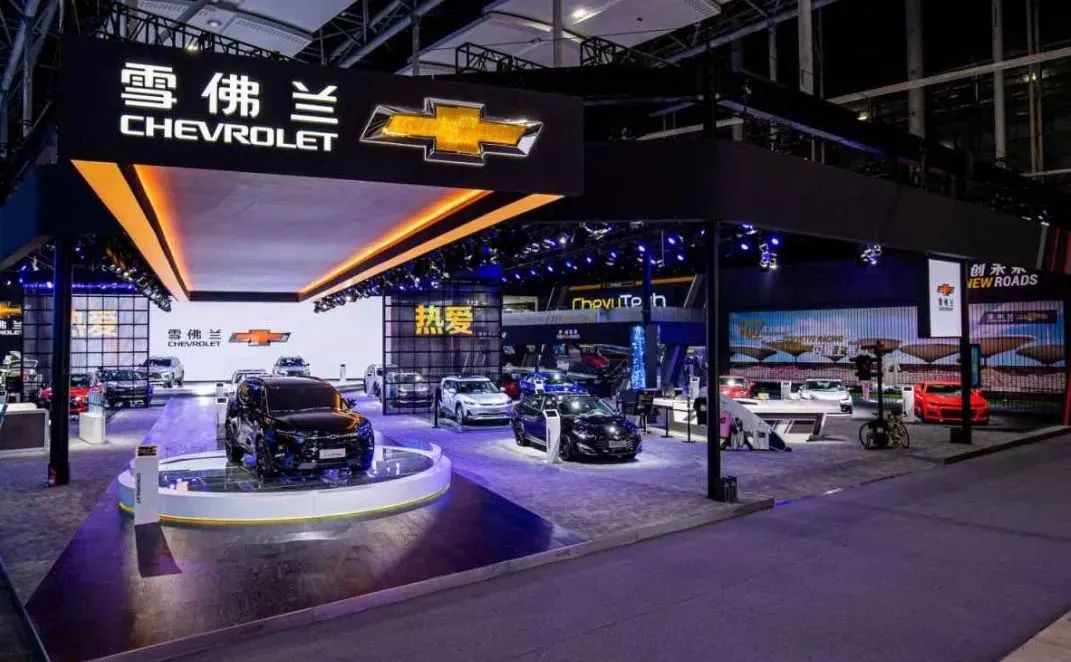Another Legacy Automaker May Exit China: Chevrolet's Countdown to Departure
Published: May 30, 2025 17:08
This 114-year-old automotive brand may soon bid farewell to the Chinese market—yet another textbook example of how joint-venture combustion engine vehicles are gradually losing their foothold in China.
Chevrolet's Imminent Exit
Multiple industry publications report that joint-venture giant SAIC-GM is conducting strategic adjustments across its three brands—Chevrolet, Buick, and Cadillac—in response to shrinking market share, desperately seeking to stem losses.
Among these brands, Chevrolet faces the most precarious situation: new product development has been permanently frozen, existing models are entering production phase-out, and rumors of market withdrawal are gaining momentum.

source: Chevrolet
While SAIC-GM General Manager Lu Xiao has repeatedly emphasized that Chevrolet will not exit China and pledged not to abandon the brand, internal sources suggest the subtext is actually "we won't abandon existing Chevrolet customers." Industry observers view this more as damage control for current owners rather than a commitment to continued market investment.
Sales Collapse and Product Cancellations
Chevrolet was once a dominant player in China's automotive landscape. In 2014, riding high on models like the Cruze and Malibu, the brand achieved annual sales of 767,000 units with a 5.3% market share, its American muscle cars ubiquitous on Chinese streets.
Fast-forward to 2024, and the situation has deteriorated dramatically: annual sales plummeted over 70% year-over-year. By March 2025, total sales across all models barely exceeded 1,000 units, with market share dropping below 0.3%—a stark illustration of the brand's precipitous decline.
The final nail in the coffin came from within the GM family itself: Cadillac launched a devastating price offensive, positioning the XT4 directly in the 160,000 yuan ($22,000) segment, completely eliminating Chevrolet's remaining survival space.
Multiple flagship models greenlit by Chevrolet in 2023, including pure-electric SUVs and flagship vehicles originally scheduled for year-end launches, became casualties of the sales freefall. To stop the bleeding, the group decisively axed these projects across the board.
Entering 2025, Chevrolet's 4S dealerships have essentially shuttered entirely, and the brand was conspicuously absent from the 2025 Shanghai Auto Show. What was intended to be a carefully orchestrated new vehicle showcase devolved into a "PowerPoint car manufacturing" farce. Today's Chevrolet survives solely by liquidating aging inventory.
A Triple Miscalculation: Design, Cost, and Pricing
The sales debacle reflects fundamental strategic missteps by leadership—years of compounding errors in design philosophy, cost management, and pricing strategy.
The 2015 Cruze redesign exemplified this self-destructive approach: the originally angular American tough-guy aesthetic was softened into a rounded "pretty boy" design. Existing customers rejected it, new buyers found it characterless, and sales crashed from over 20,000 monthly units to barely 1,000. Even when the classic design was later reintroduced, the market had already been captured by the Nissan Sylphy and Volkswagen Lavida.
Moreover, while competitors upgraded interior quality and smart features, Chevrolet remained committed to "hard plastic aesthetics": flagship models still featured small-screen infotainment systems and traditional instrument clusters, with interiors dominated by hard plastic materials. This created a stark disconnect with mainstream 200,000 yuan ($28,000) market expectations, earning ridicule as "bare-bones manufacturing".
Recognizing deteriorating market sentiment, Chevrolet's response was brutally simplistic: discount everything. The Malibu XL's 50,000 yuan ($7,000) discounts became routine, while the Equinox was slashed to bone-deep levels.
Media outlets published scathing analyses like "Preparing for 'Network Exit'? Chevrolet Launches Clearance Fire Sale."
While this stimulated transactions, it systematically devalued the brand. Consumers developed a "wait for discounts" mentality, with new vehicles depreciating upon launch—a vicious cycle of declining brand equity.
Transformation Fumbles and Strategic Myopia
As China's automotive market accelerated into the new energy fast lane, Chevrolet could have seized this opportunity for reinvention. Instead, it arrived fashionably late to the party.
The brand's inaugural pure-electric model, the Menlo, didn't debut until 2020—and even then as a "gas-to-electric conversion" product. The 2024 Equinox Plus plug-in hybrid offered merely 120km of pure-electric range—insufficient even for ride-hailing drivers—while retaining combustion engine interior design philosophy. It was dead on arrival.
Even more bewildering was the introduction of the North American Tahoe SUV, which arrived with castrated performance and prohibitive tariffs, immediately alienating consumers. Meanwhile, companies like BYD had already captured market share with extended range and intelligent cockpits. Chevrolet essentially had no cards left to play. While China's new energy vehicle penetration approached 50% in 2024, Chevrolet's NEV proportion remained below 5%.
Though claims of "China exit" may be premature, the reality of mass dealership closures and plummeting sales suggests Chevrolet has essentially entered intensive care. Or perhaps more accurately: as long as life support remains connected, it can't technically be declared deceased.
In summary, Chevrolet's new energy strategy was consistently half-a-beat behind, with delayed model launches, lagging technological iteration, and catastrophically misguided market strategies. Market abandonment was simply a matter of time.
The Broader Implications
Should Chevrolet indeed exit the Chinese market, it would join Suzuki, Fiat, DS, and other foreign brands in the growing graveyard of international automotive casualties in China.
This serves as another stark warning to traditional automakers: the electrification wave waits for no one. The speed of transformation directly determines survival space—swift adaptation becomes an escape ladder, while hesitation becomes a slide into the abyss.
